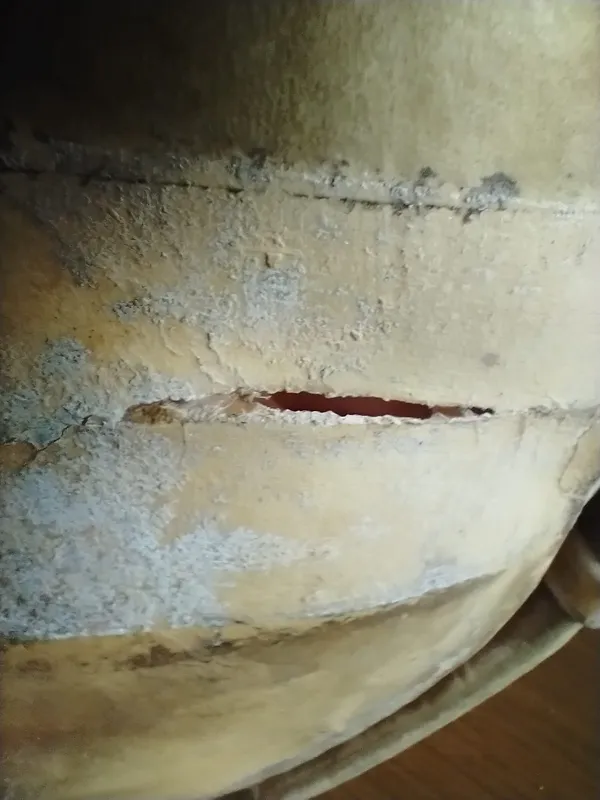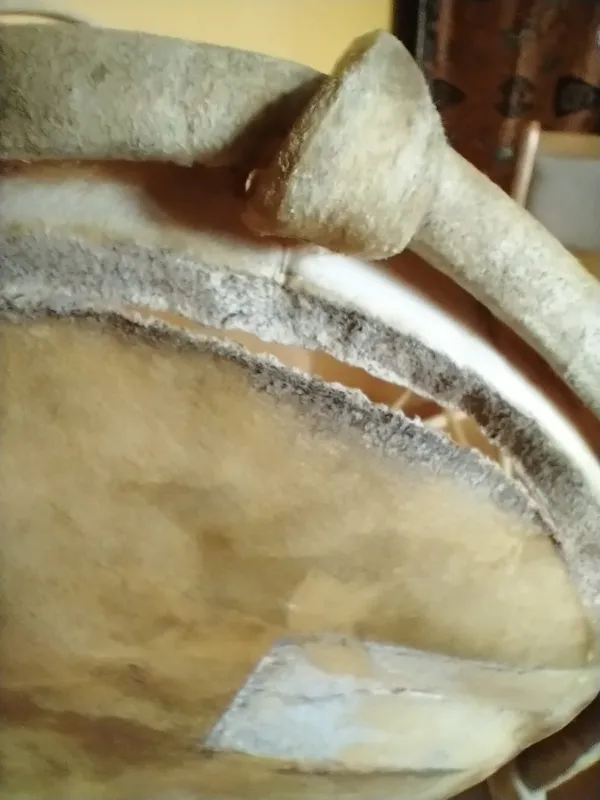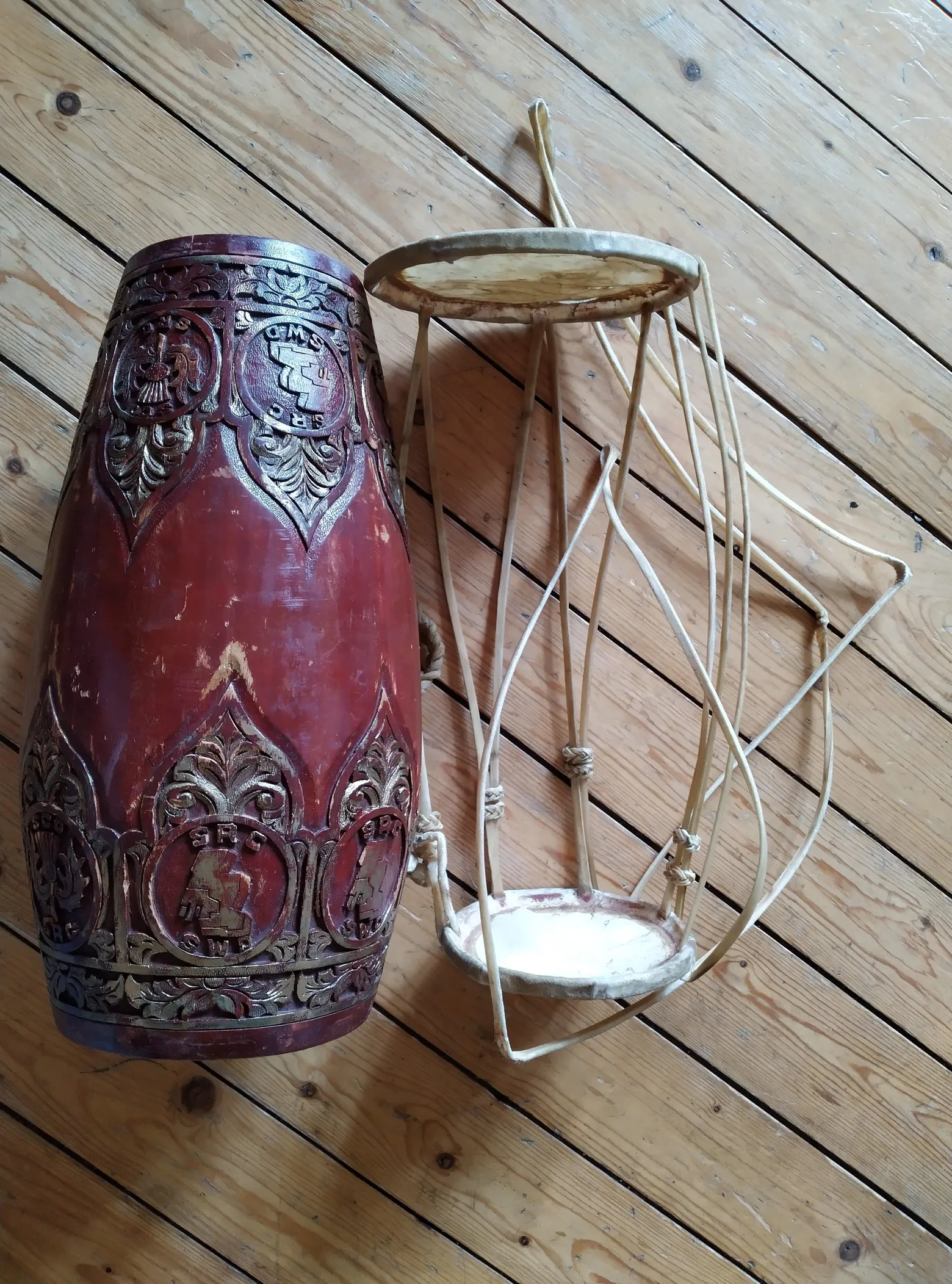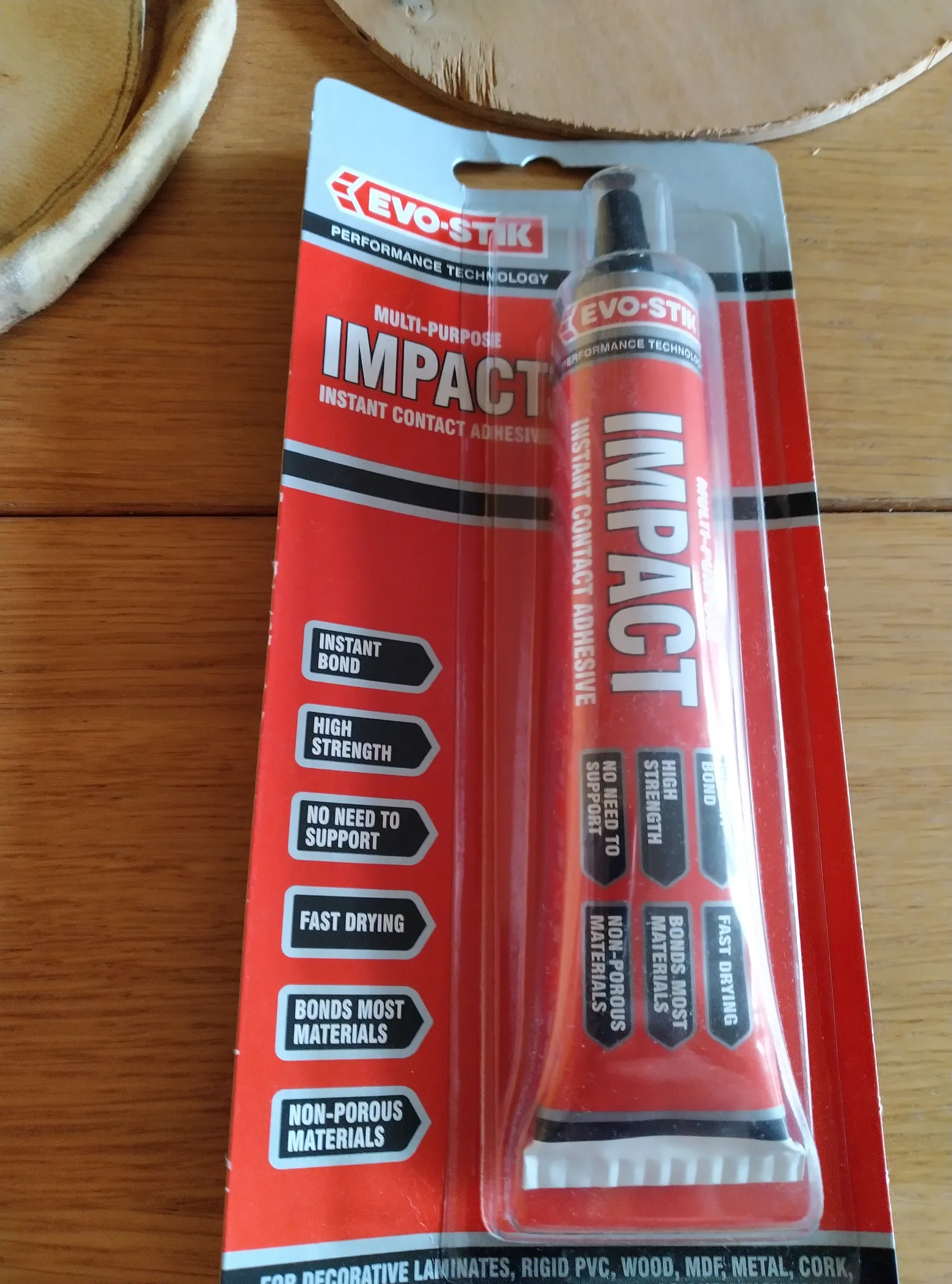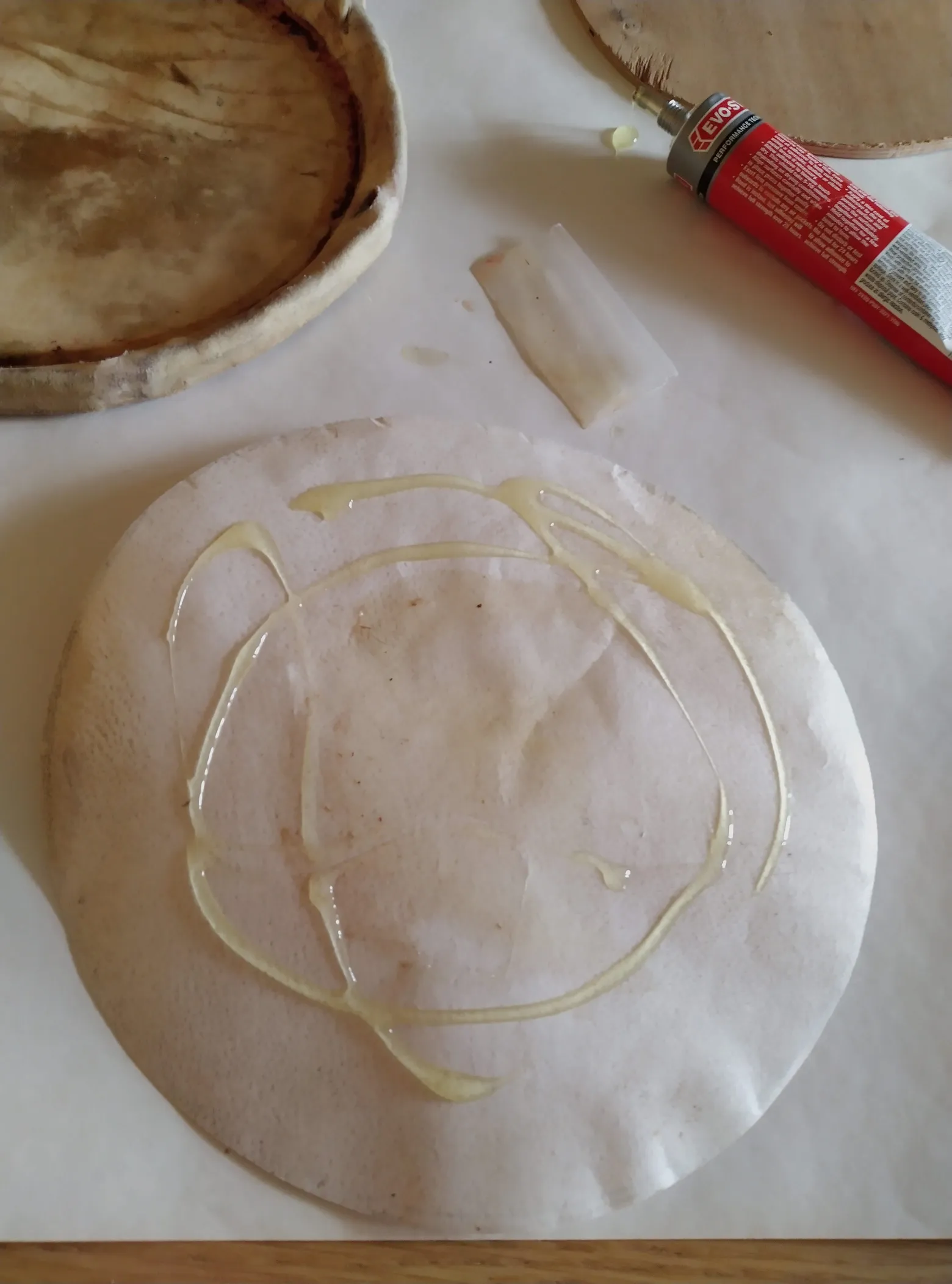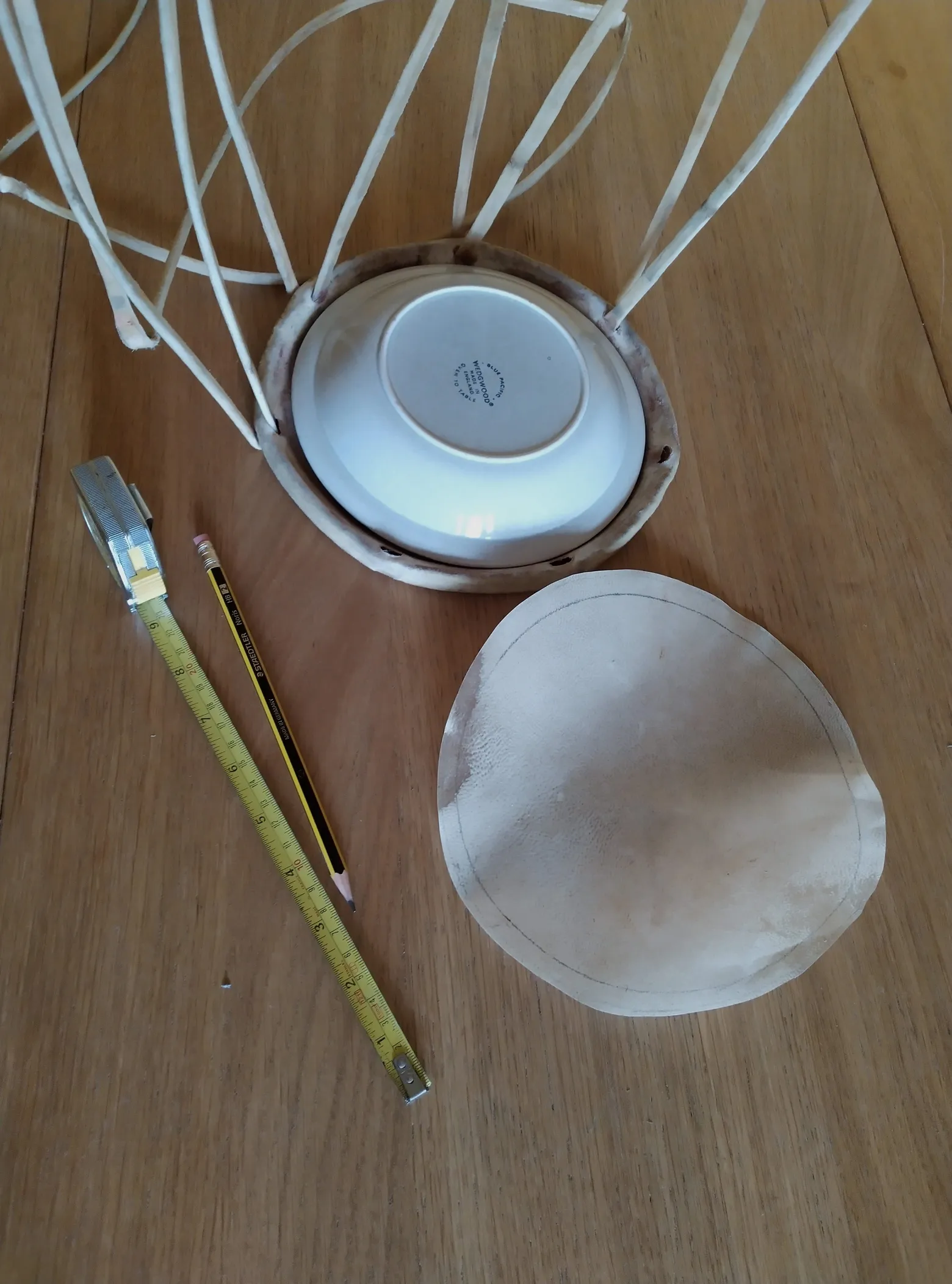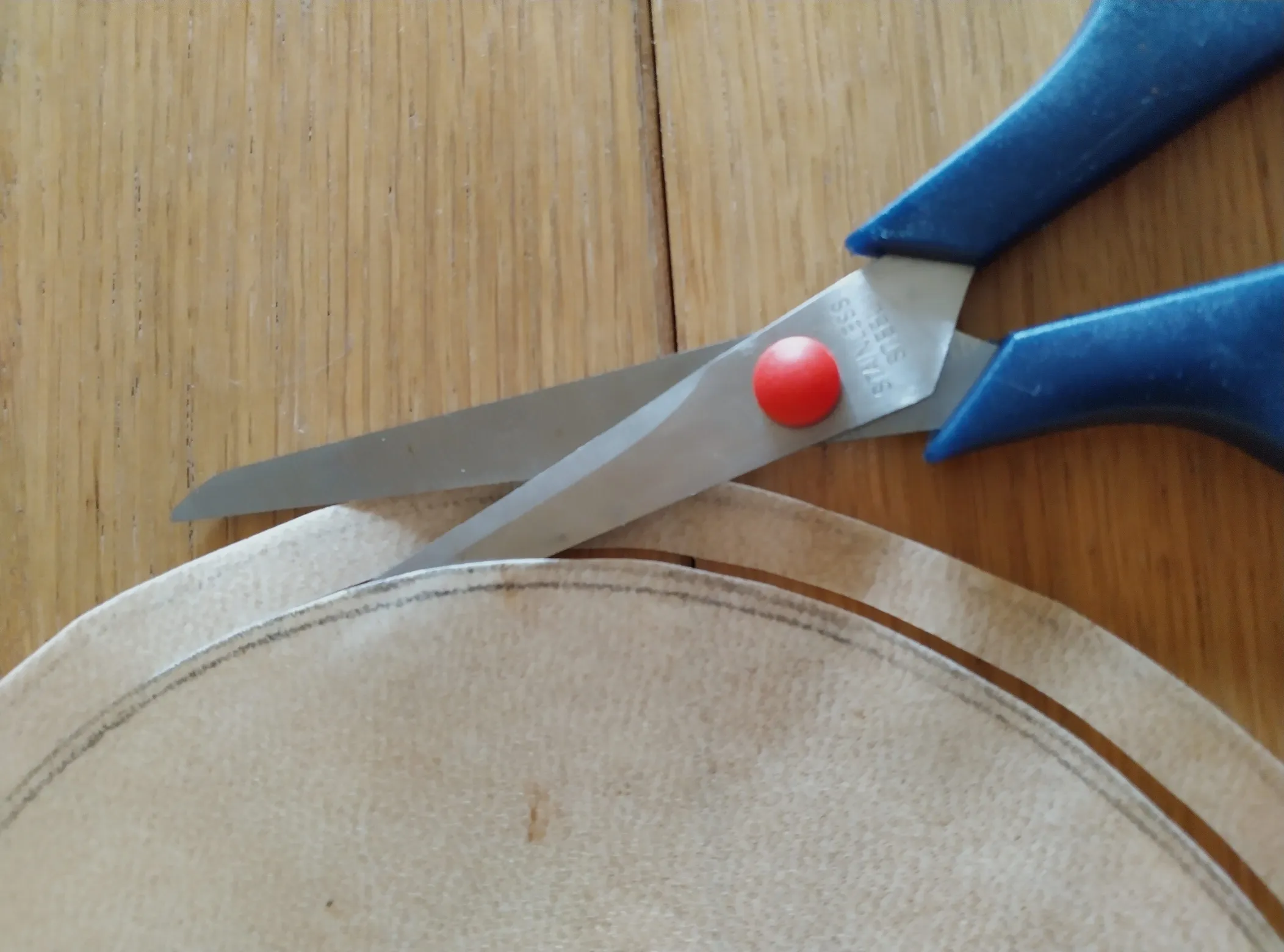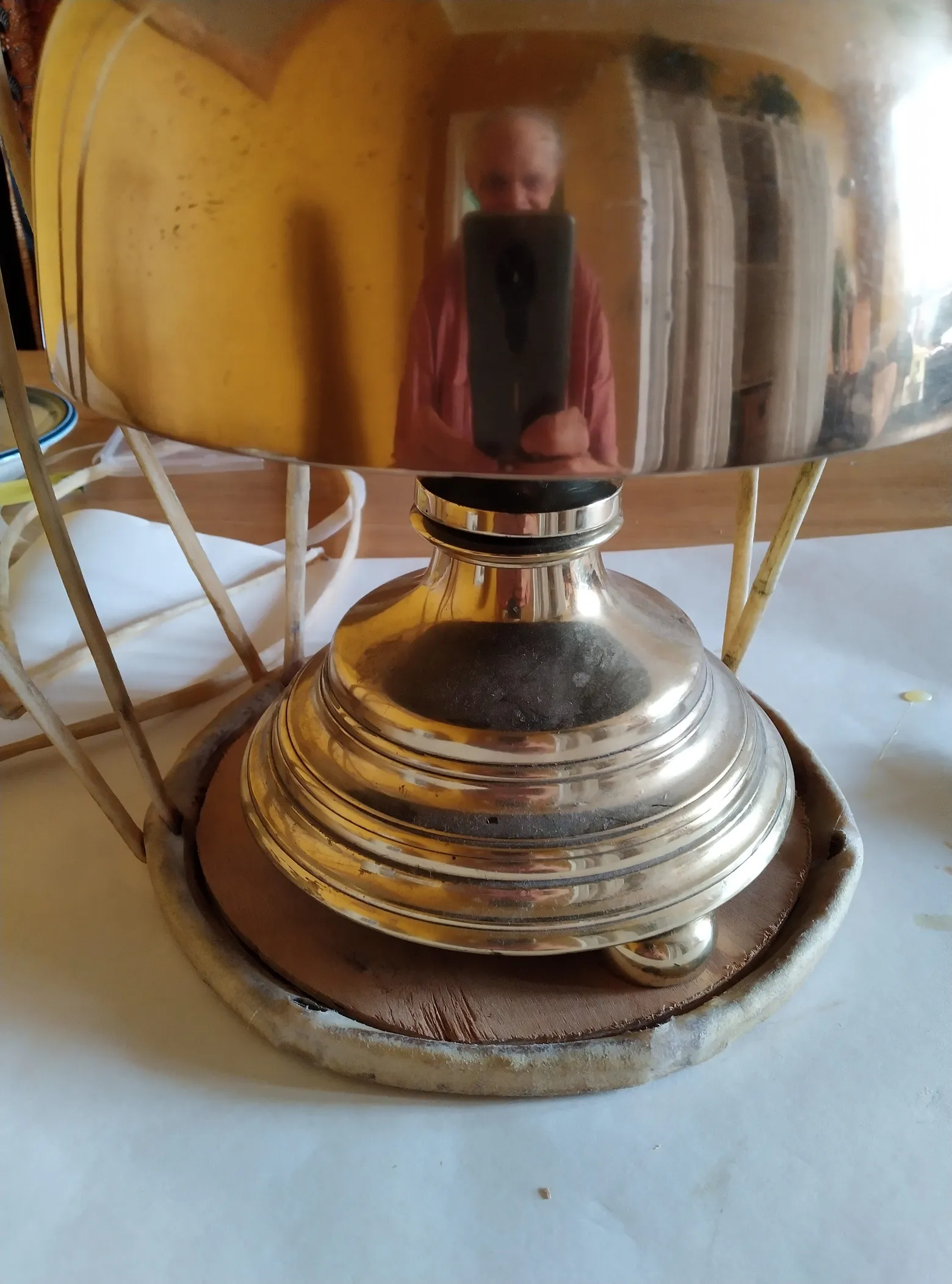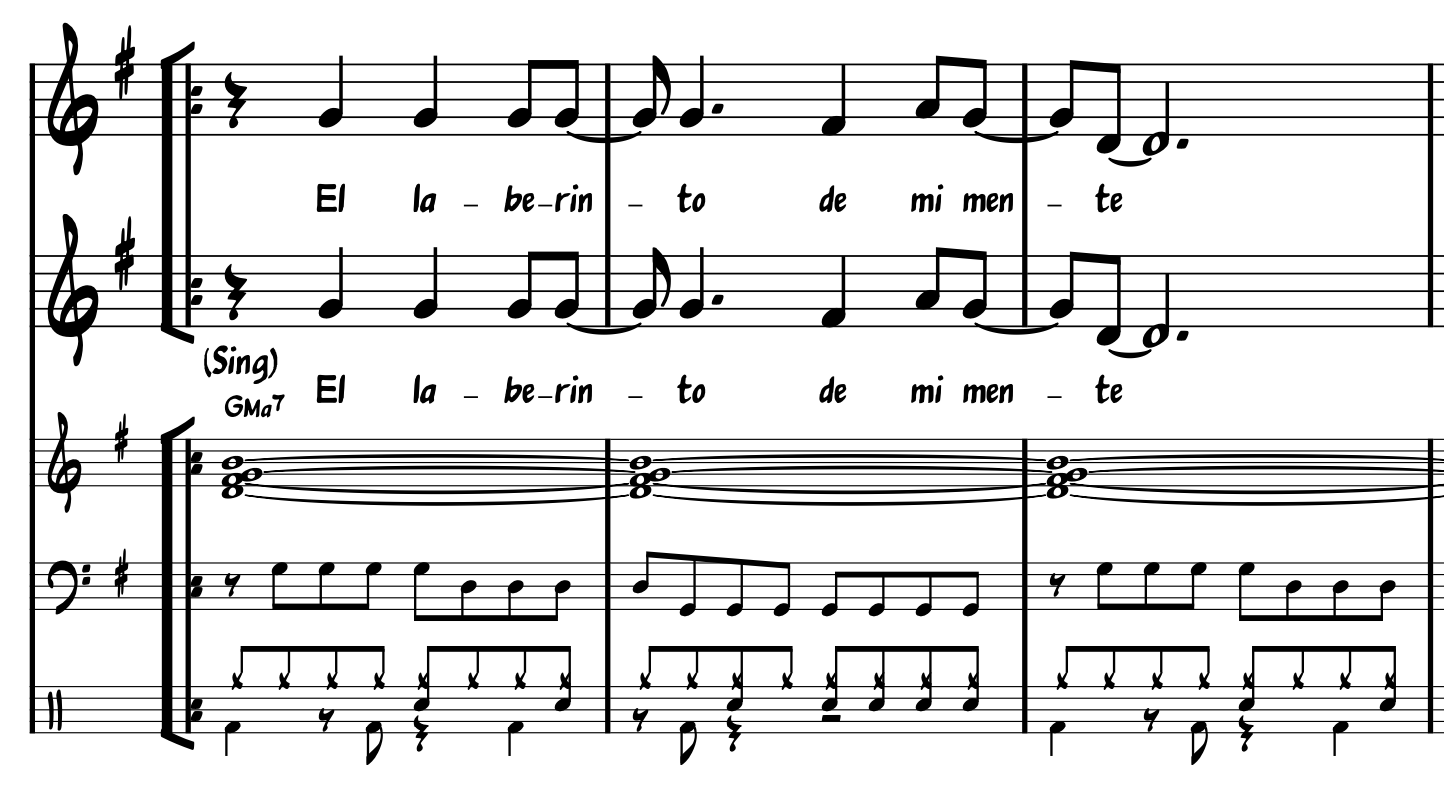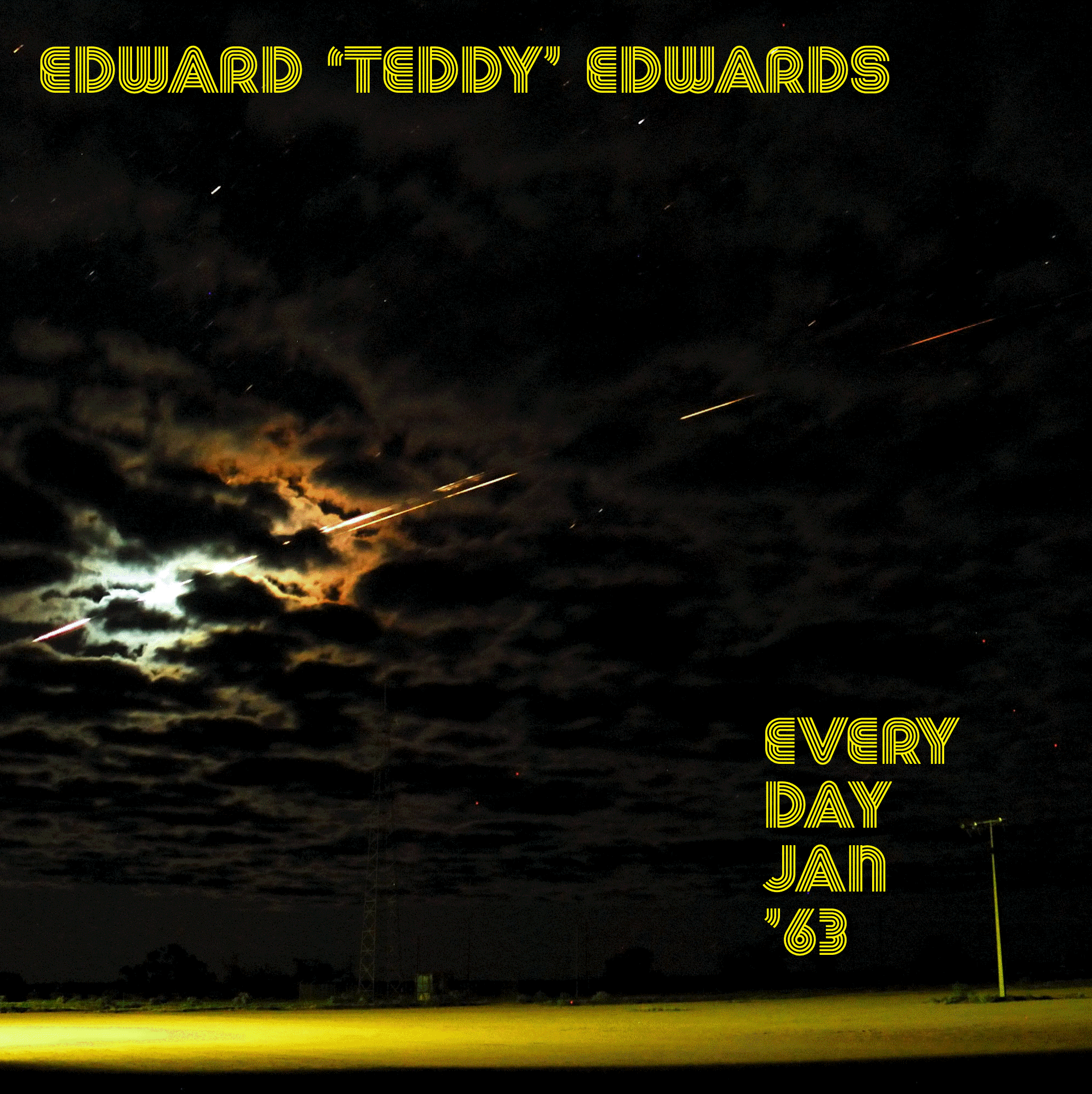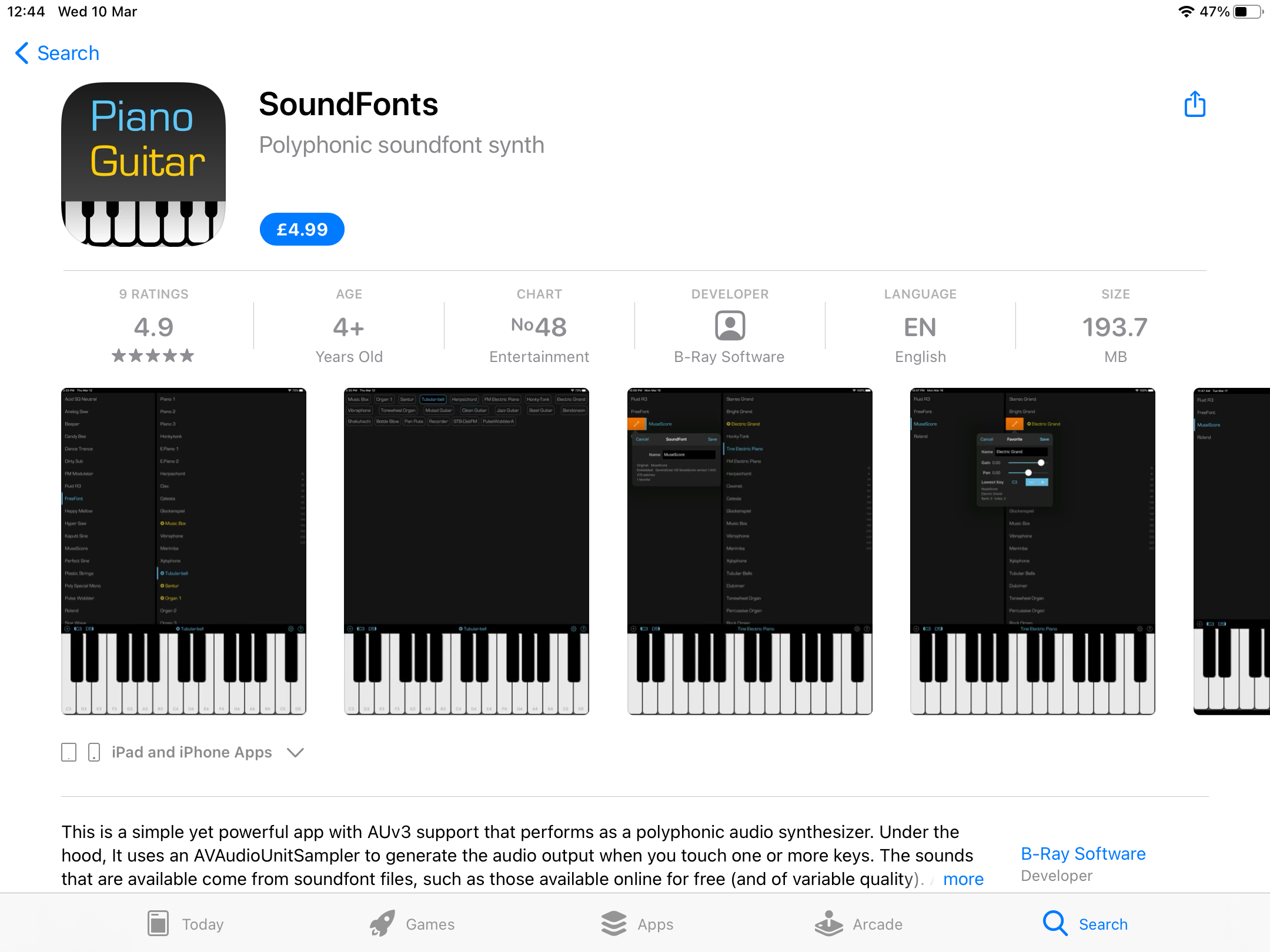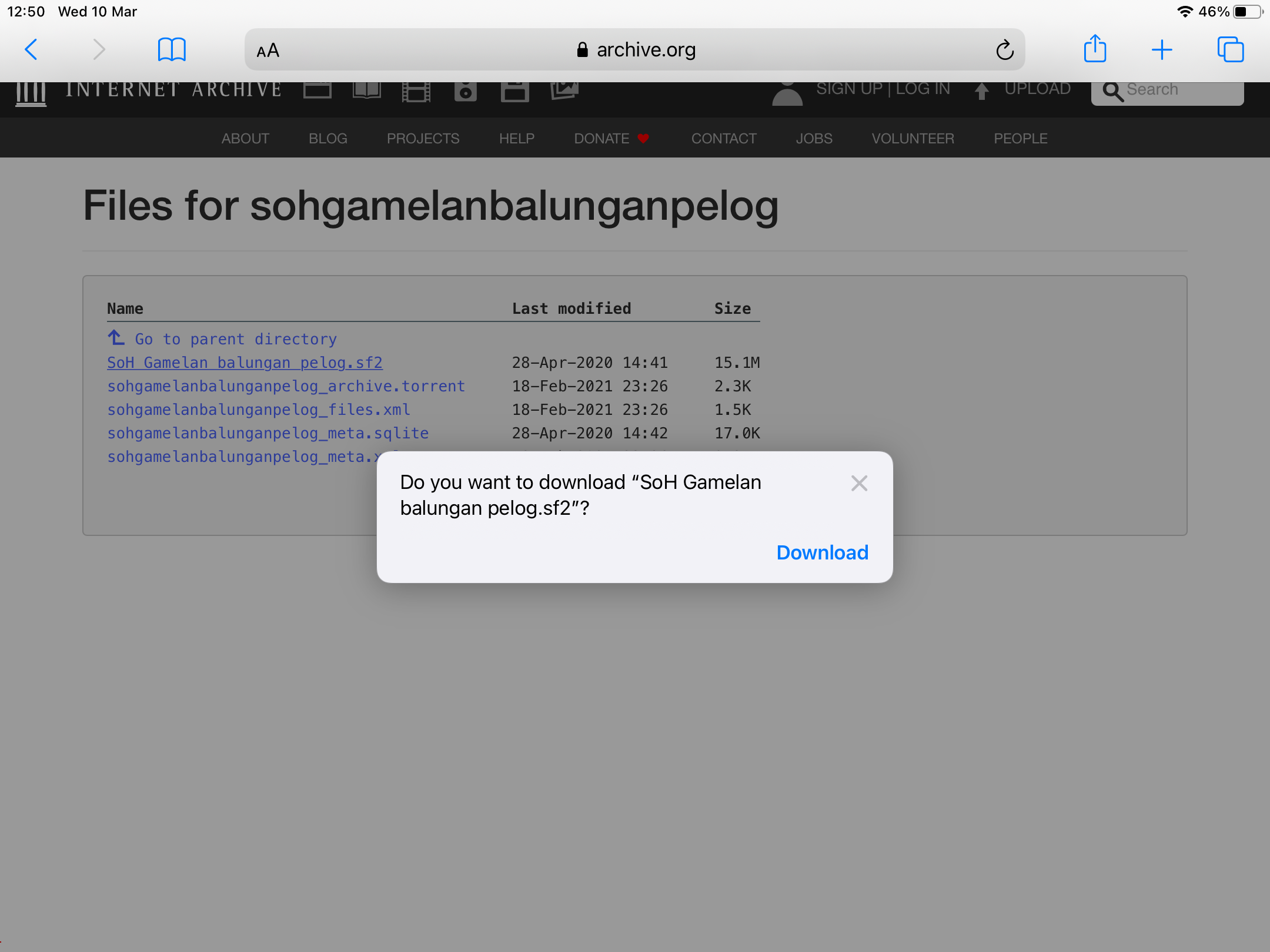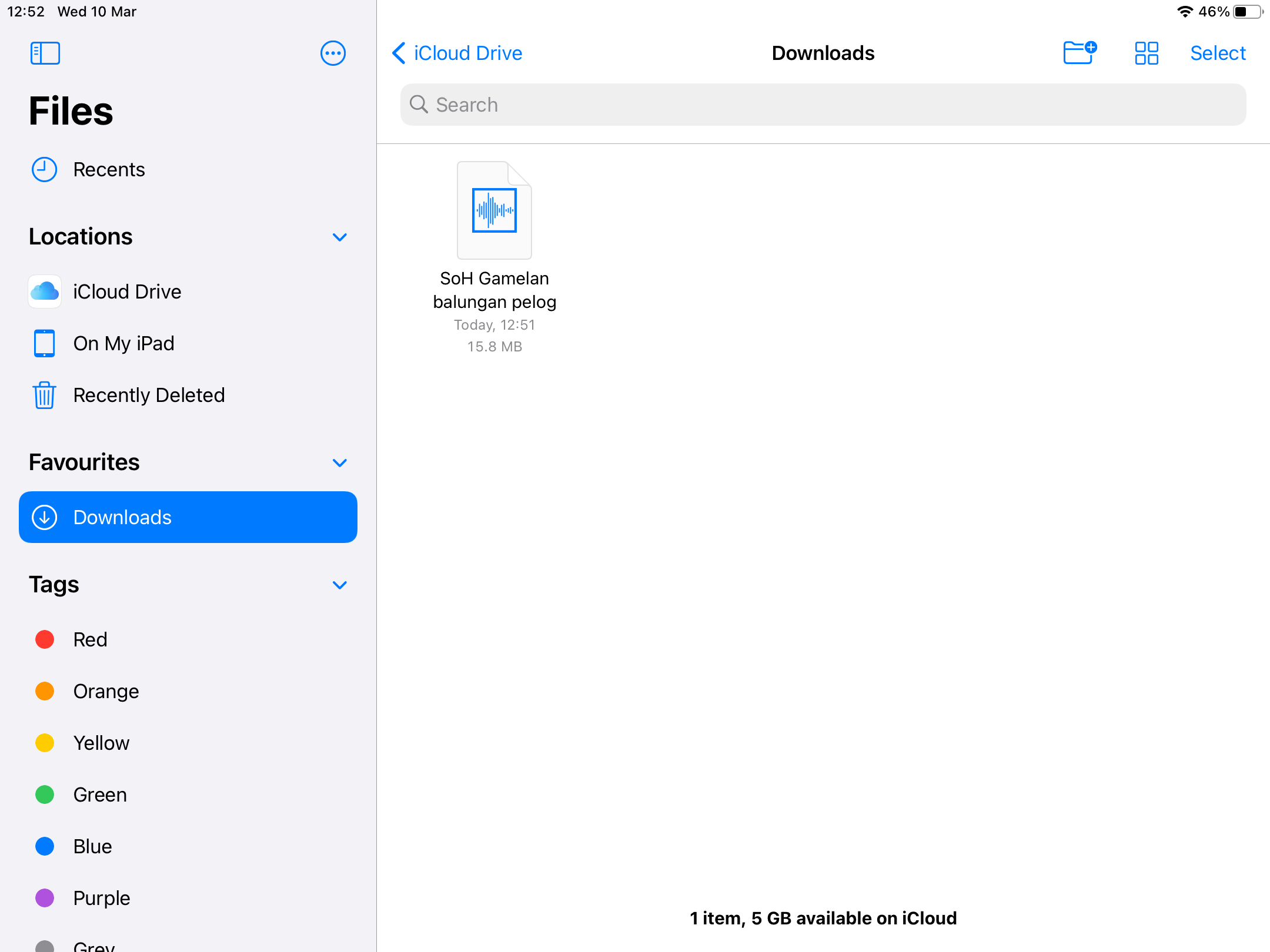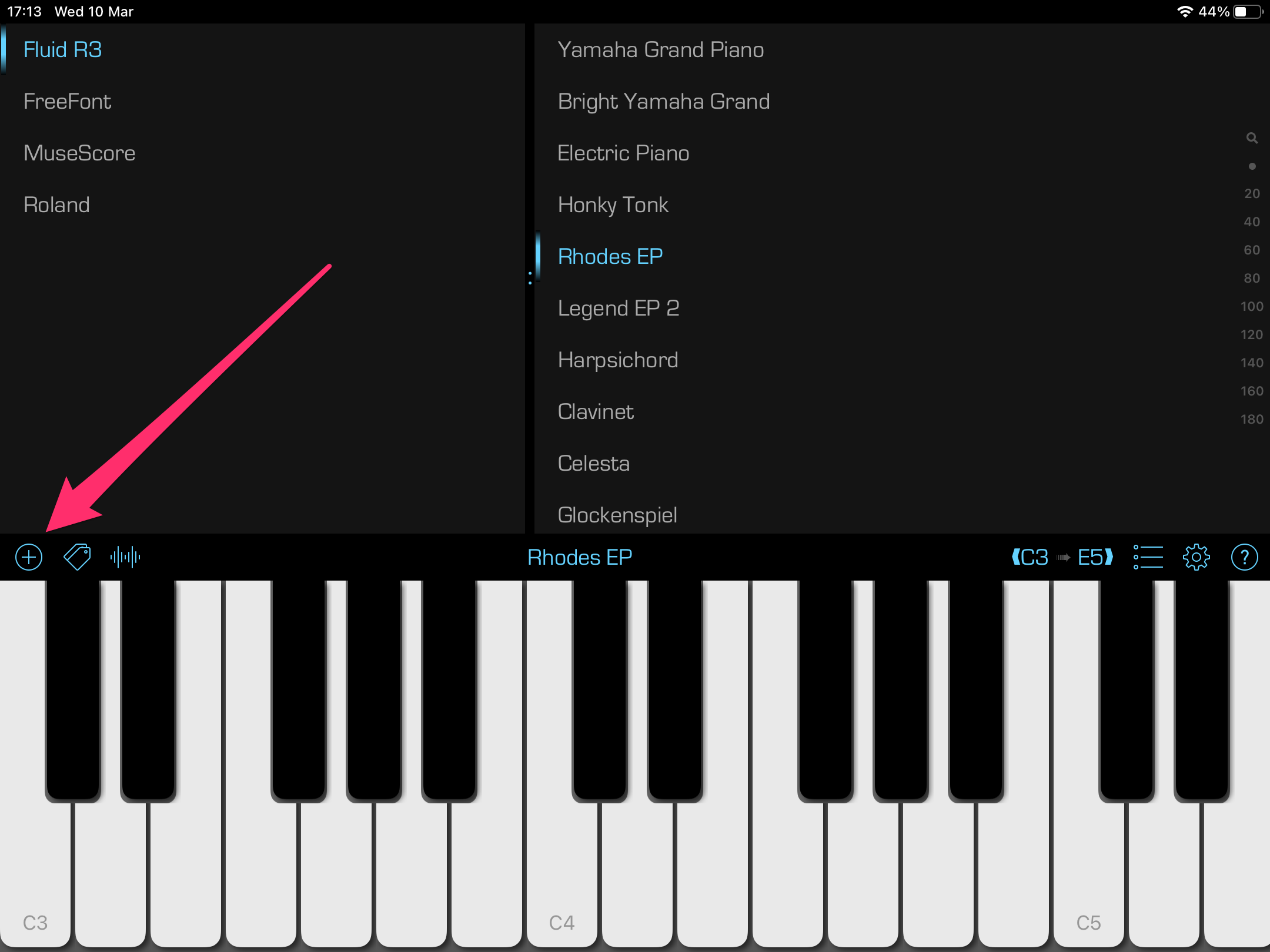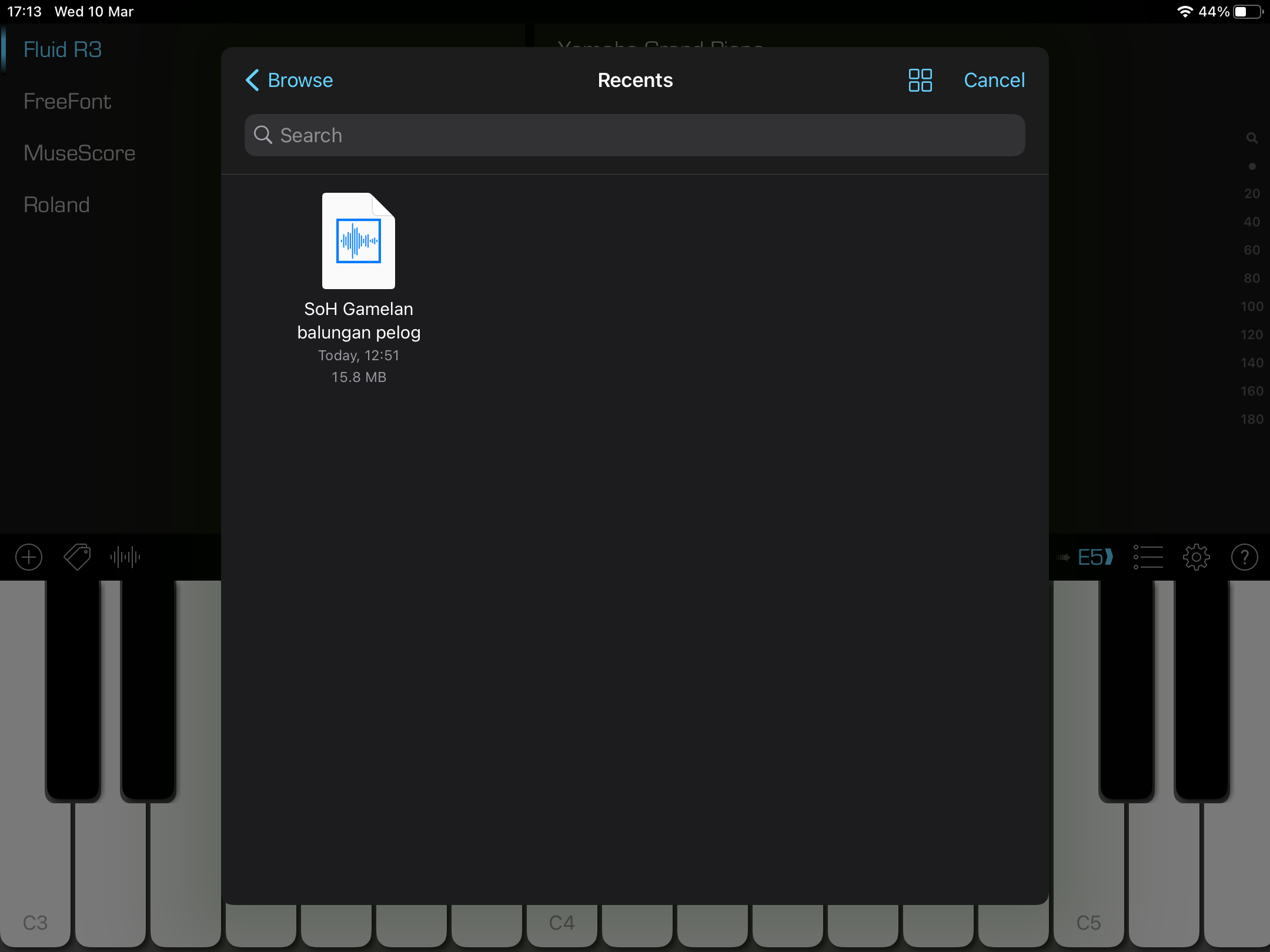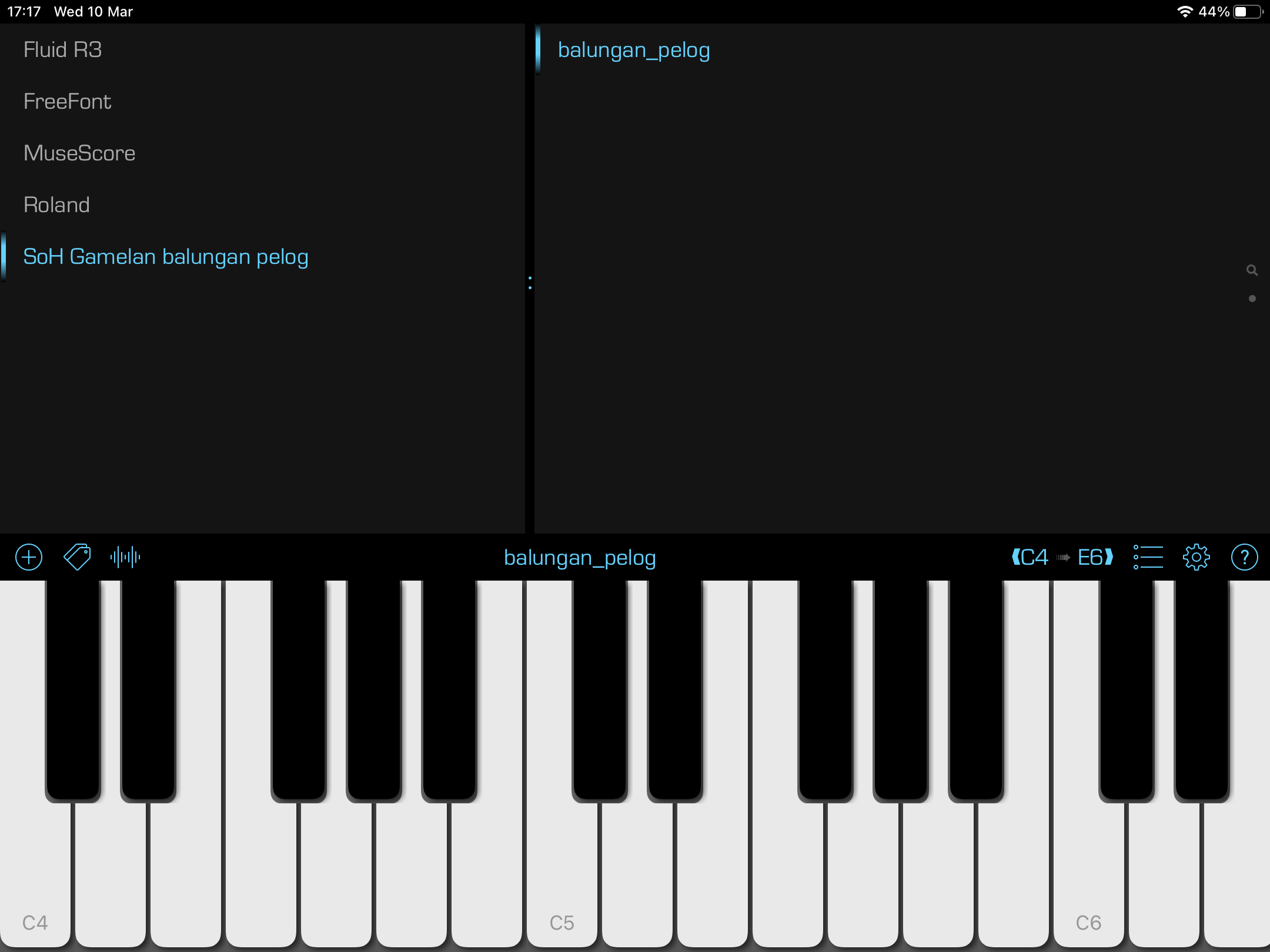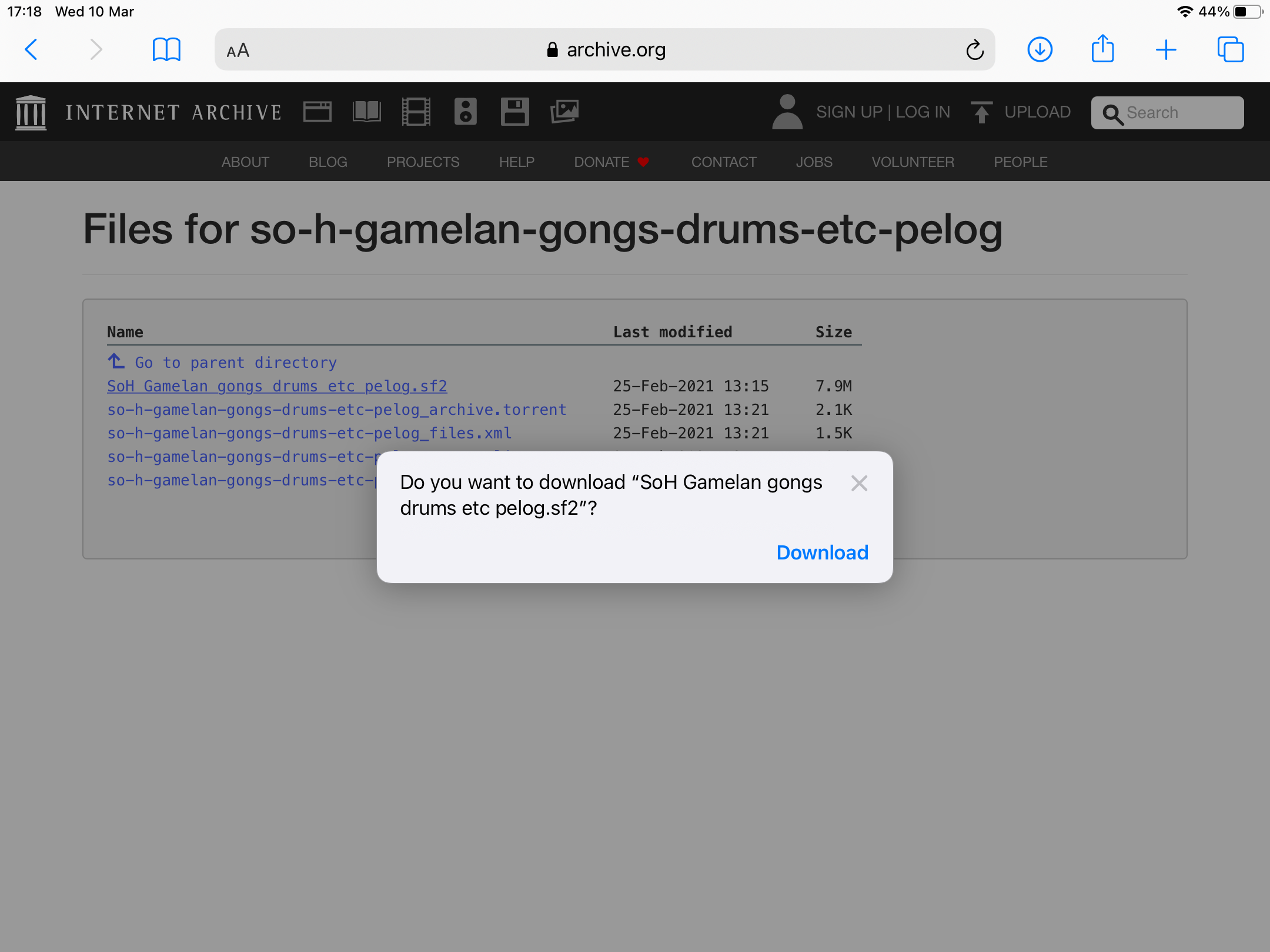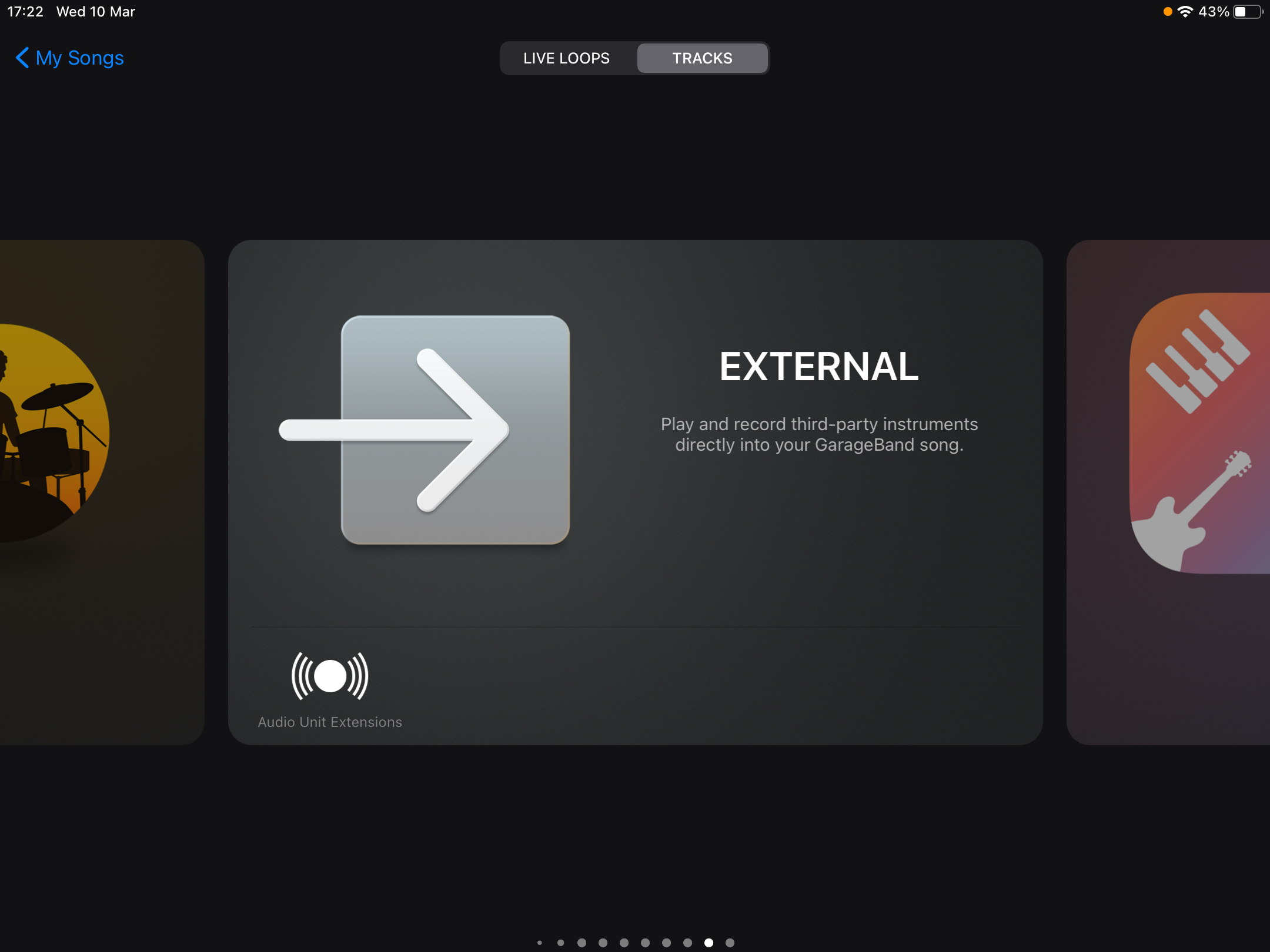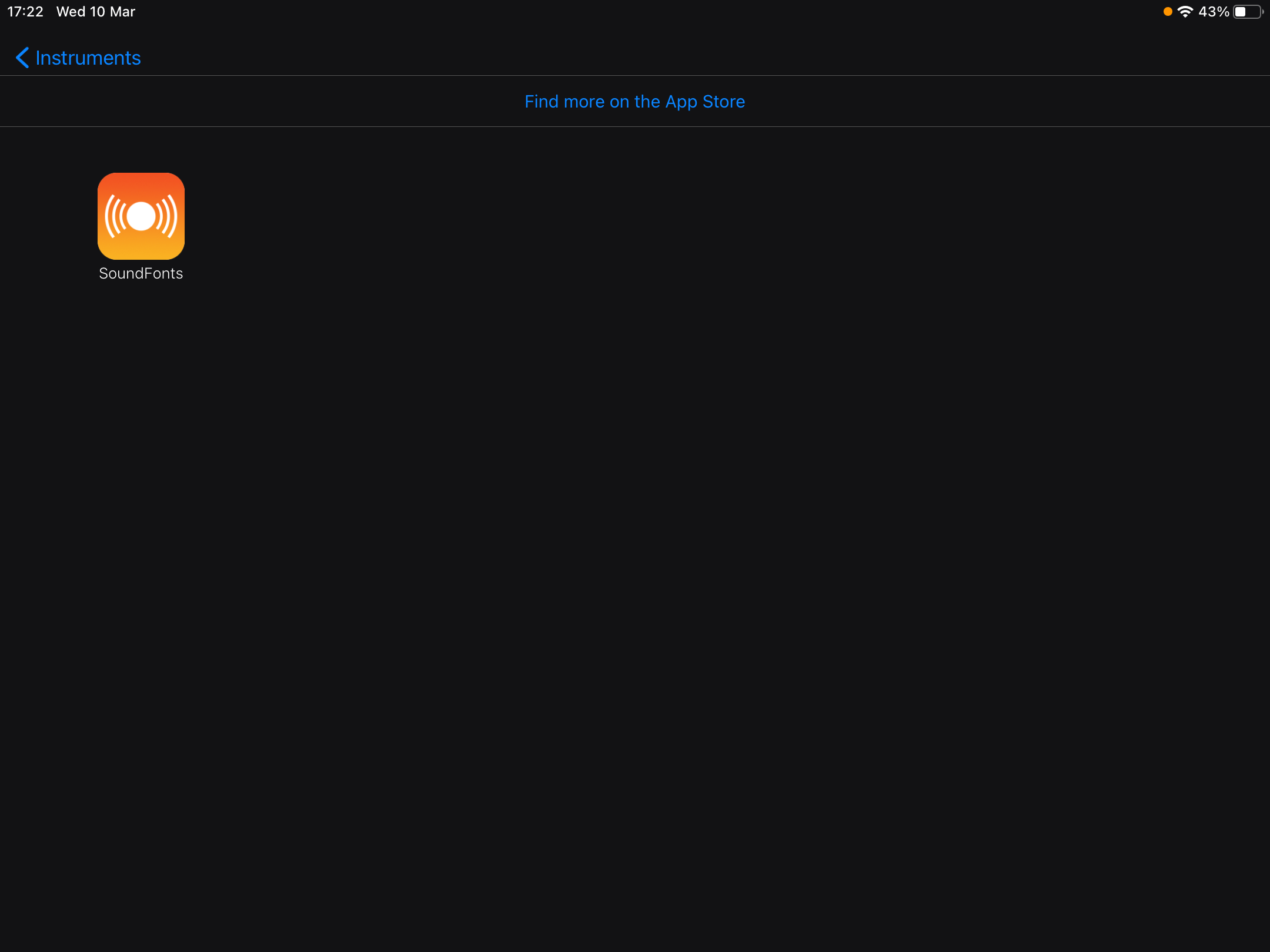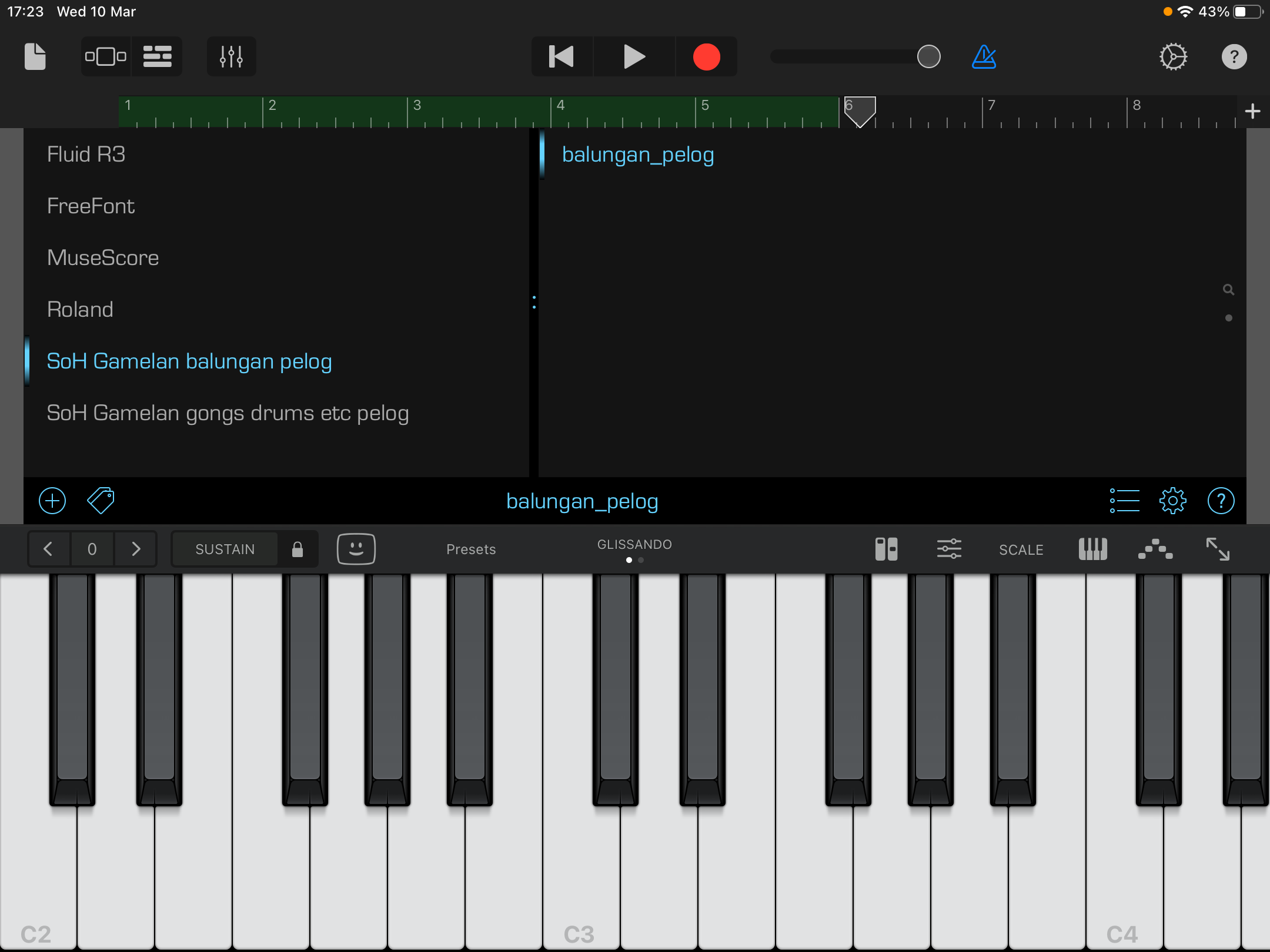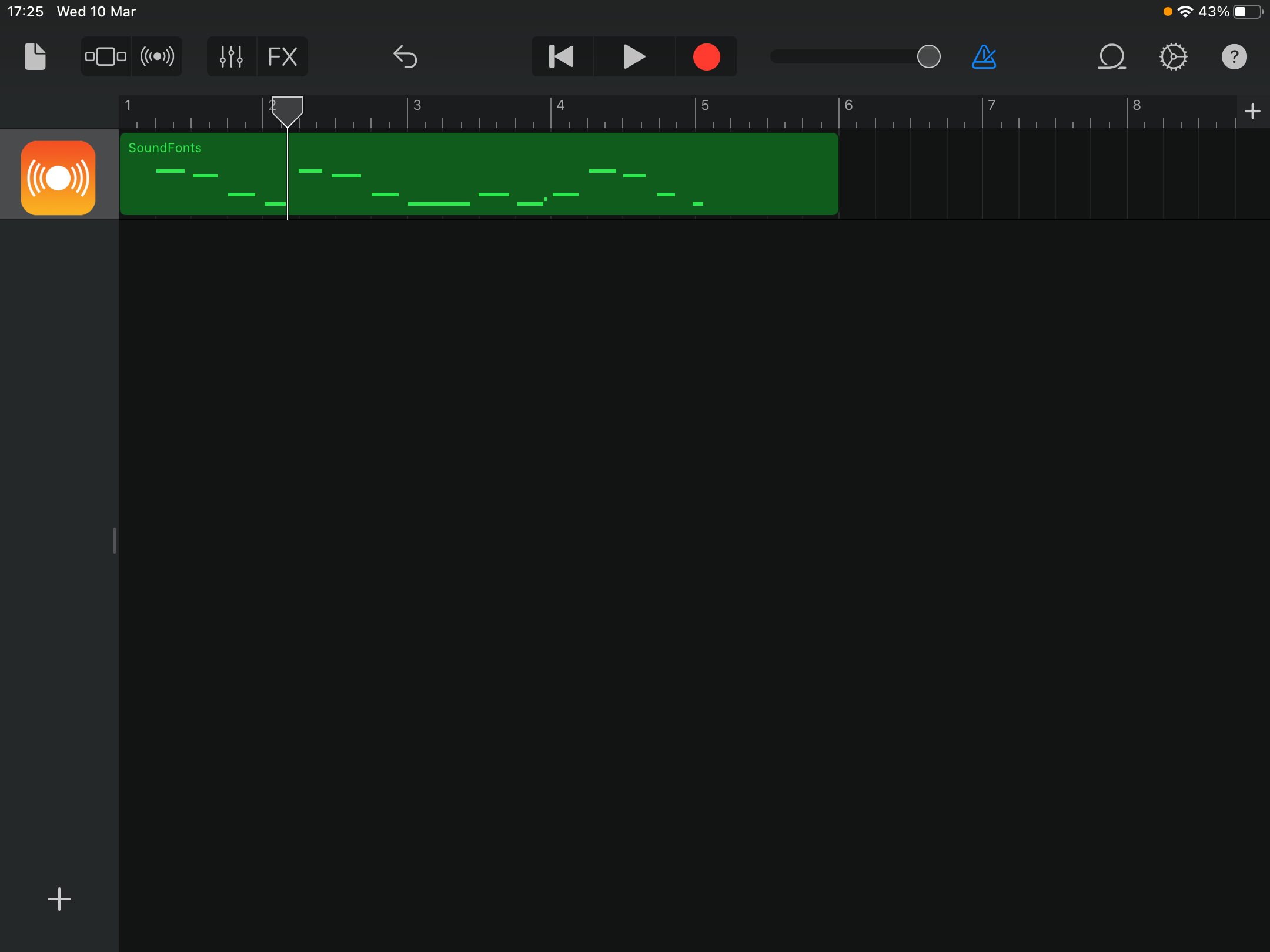Ketipung repair – the outcome
So, the ketipung repair has turned out to be partially succesful:
The main part of the repair is fine: gluing a thin circle of goatskin on the underside of the larger head worked well.
The problem was reassembling the drum. I tried to put it all back together dry, but it was impossible to rethread the tensioning thongs. After soaking, the ring of smaller head appeared to shrink, and I could not get it to properly sit back on the rim. It was also an incredible effort to try to get the tensioning thongs back in place and pull them tight enough. I ended up with the end of the straps about eight inches looser than they had been.
The woven tensioning rings had collapsed in the process of soaking, and I was struggling enough anyway with trying to get the thing back to gether without figuring out how they were supposed to fit. I used some cable ties instead.
However: the drum is more or less useable now, which counts as some sort of success. I'm going to do some more work on the tensioning rings, there must be a better way than those cable ties…
